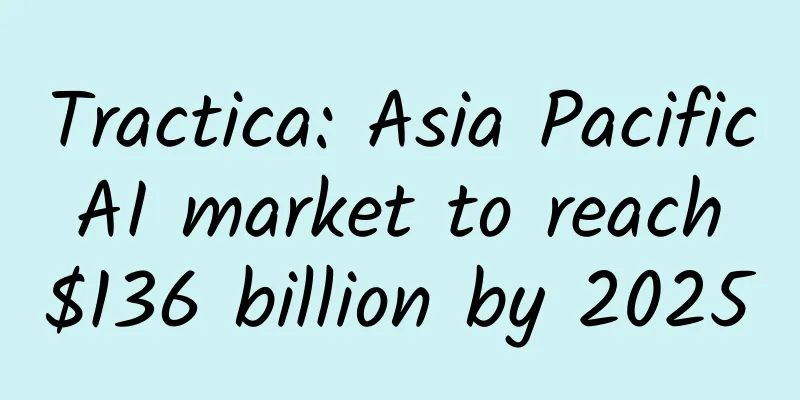Tractica: Asia Pacific AI market to reach $136 billion by 2025

|
The artificial intelligence (AI) market is beginning to solidify its place in the real world at a faster pace than it did just a few years ago, especially as startups and technology vendors rush to create niche solutions and platforms. According to new data from Tractica, the industry is rapidly evolving and focusing on key areas as mergers and acquisitions (M&A) activity intensifies. According to the survey, key segments of the AI market include:
The Asia Pacific (APAC) region has traditionally been thought to lag behind North America and Europe in terms of technology adoption. However, according to Tractica, the Asia Pacific region could lead the rest of the world in AI technology over the next decade. The Asia Pacific region accounts for 60% of the world's population, so any major technological shift, such as artificial intelligence, could impact the region's future. Tractica's analysis shows that the AI market in the Asia-Pacific region, including software, hardware and services, will grow from $6 billion in 2017 to $136 billion in 2025. By then, China is expected to account for 70% of the market share, followed by Japan, South Korea, India and other countries in the Asia-Pacific region. Aditya Kaul, research director, said: "Much of the growth in AI in Asia Pacific will come from China, as its accelerators are nurturing tech giants and China has recognized the significance of AI for economic and social development. In addition, countries such as Japan, South Korea, India, Taiwan and Singapore have also turned their attention to AI and have announced national AI strategies." In the Asia-Pacific region, AI plays an important role in transforming healthcare, agriculture, and education. AI will help find better treatments for diseases, democratize healthcare, improve crop yields, and provide personalized education for all. AI may also drive the development of traditional industries such as telecommunications, retail, advertising, automotive, business services, and consumer markets. The public sector is also expected to be one of the biggest beneficiaries of AI in the Asia-Pacific region, helping cities surpass Western countries in smart services and improved living standards. |
>>: A look at the PGC strategy of video websites from an alternative reality show
Recommend
【Creative Cultivation Program】What does a person’s “blood type” actually mean?
Author: Li Jinghui (PhD student in Medical Experi...
Red envelopes are rolling in! Have you used these new features of WeChat?
The Spring Festival is just a few days away, and ...
Can you still eat the leftover food from the Chinese New Year? Does it really cause cancer? Tell your parents right away
Expert of this article: Fu Shufang, Master of Foo...
Are meteorological proverbs reliable? Is there any scientific basis for predicting the weather by looking at the clouds?
Author: Science History Commentary Wu Jingping Wh...
Why is Pokemon GO so popular? Please don't think with your butt!
The title is a bit vulgar. The origin of this is ...
Strategic plan for online operations during the epidemic period
The following is an outline of the content of thi...
Beware! Don’t squeeze pimples! A man developed a hemangioma because of this…
Everyone loves beauty, but acne comes from time t...
Marketing promotion plan: New media marketing hot calendar in May!
Whether it is new media, marketing, event plannin...
How to turn demand into practical product solutions!
Here we assume that the company already has a cer...
bmob personal lost property application_app development template
Source code introduction The source code is very ...
Community operation strategies at different stages
Infancy: protection period, developing cognitive ...
New media operation and promotion tips for increasing followers!
Today, we will explain in detail how to increase ...
Tencent Holdings' American depositary receipts surged more than 5% on Friday as U.S. companies use WeChat in China
US companies use WeChat in China As the US govern...
How much does it cost to invest in Anshan Sports Mini Program?
How much does it cost to attract investment in An...
Get ready for a new look for Android: Detailed explanation of the second developer preview of Android 12
In the early morning of March 18, the second Andr...









